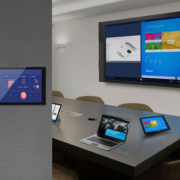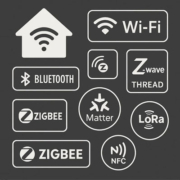What Is the Future of Smart Home Control Panels?
Smart home control panels have become the central interface for managing connected devices — from lighting and security to HVAC and multimedia. But as the smart home landscape evolves, control panels are also transforming rapidly. The future brings more intelligence, greater interoperability, and immersive user experiences.
Let’s explore what lies ahead for smart home control panels and how companies like Portworld are helping shape that future.
Portworld’s competitive edge lies in its customization capability and focus on embedded hardware + software for integrators. Whether you need a branded control panel for a real estate project, a smart hotel room, or a smart home product line, Portworld delivers:
- Fast turnaround for OEM/ODM projects
- Full BSP/SDK support for app and firmware customization
- Multi-protocol compatibility (KNX, RS485, Modbus, Zigbee, Matter)
1. AI-Powered Automation and Personalization
The next generation of smart home panels will go beyond manual control — they’ll anticipate your needs.
Future Trend:
- AI and machine learning will allow panels to learn user behavior, adapting lighting, climate, and scenes automatically.
- Predictive control: e.g., turning off unused devices, adjusting temperature based on habits or weather forecasts.
- Voice assistants and virtual agents will become more conversational and context-aware.
Portworld’s Direction:
Portworld’s Android-based panels already support AI-enabled assistants like Google Assistant and Alexa. With flexible OS support and open APIs, we’re building compatibility for AI scheduling, energy optimization, and user profiling features.
2. Seamless Interoperability via Matter and Thread
Compatibility between brands has long been a challenge. That’s changing fast.
Future Trend:
- The adoption of Matter, the new smart home standard backed by Apple, Google, Amazon, and the CSA, is redefining cross-brand interoperability.
- Thread protocol offers low-latency, secure, and energy-efficient mesh networking.
- Future panels will act as Matter Controllers and Thread Border Routers, making integration plug-and-play.
Portworld’s Direction:
Portworld is preparing new smart home control panel models with Matter and Thread support via firmware and chipset upgrades. This ensures long-term compatibility across ecosystems and eliminates the need for multiple hubs.
3. Modular and Scalable System Design
The future isn’t one-size-fits-all. Customization is king.
Future Trend:
- Modular control panels that allow plug-in modules: Zigbee, Z-Wave, LoRa, 5G, RS485, etc.
- Custom UI/UX experiences tailored to homes, hotels, offices, or healthcare settings.
- Panels will become smart terminals, adaptable to any environment or need.
Portworld’s Direction:
Portworld offers OEM/ODM services for hardware and software customization — screen sizes from 5.5” to 21.5”, interfaces like PoE, RS485, GPIO, CAN, and protocol integration for KNX, Modbus, Zigbee, or LoRa. Our modular architecture makes it easy to scale across applications.
4. Touchless & Multi-Modal Interaction
Touchscreens will remain essential — but voice, gestures, and biometrics are rising.
Future Trend:
- Facial recognition for secure user access.
- Voice-activated commands for hands-free operation.
- Gesture control and proximity sensing for contactless usage (especially important in healthcare and hospitality).
Portworld’s Direction:
We are integrating voice interfaces, facial recognition cameras, and infrared sensors into select panel models. Combined with Android or Linux OS, these enable versatile HMI experiences.










